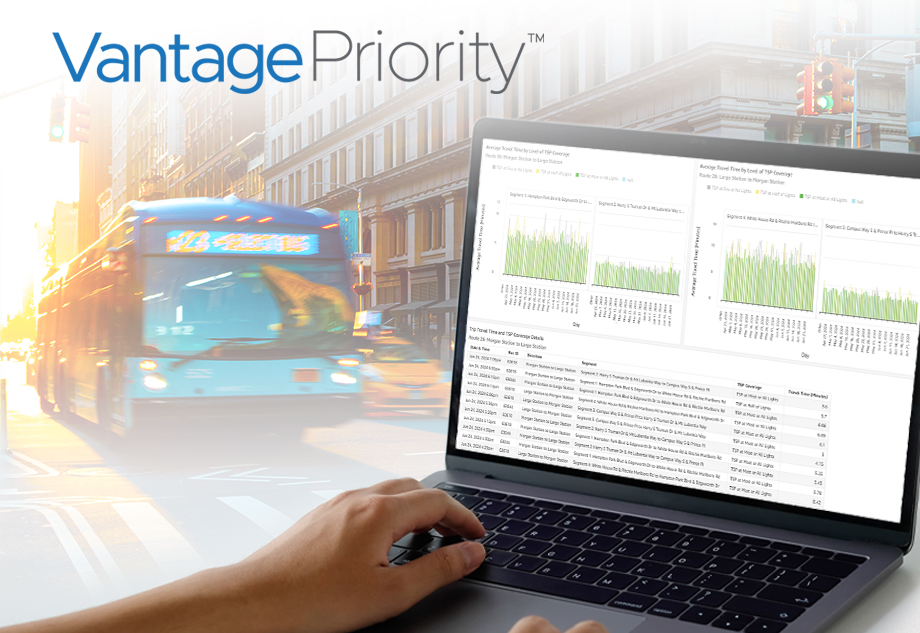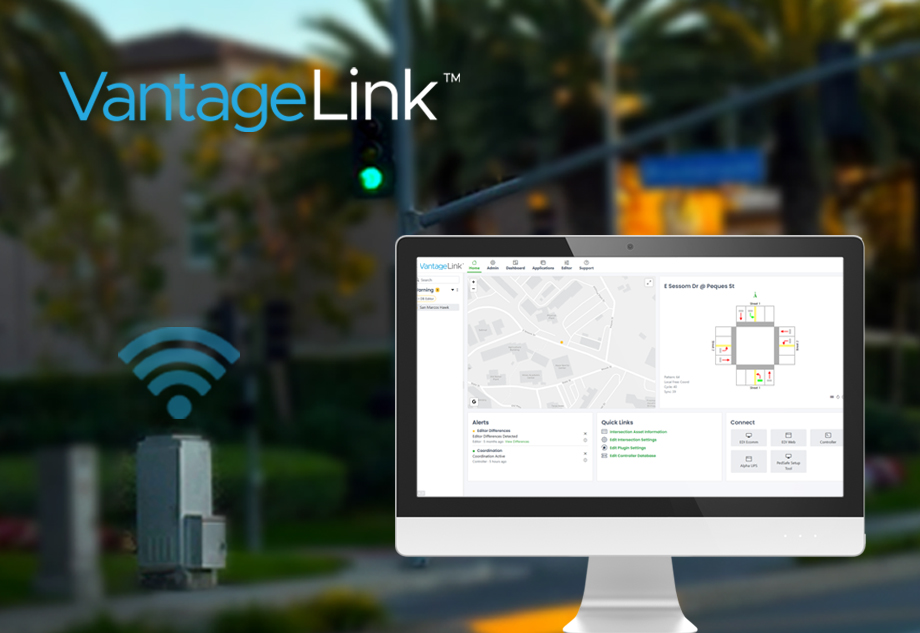
Emerging Trends in Transportation Engineering: Why Safety and Efficiency Still Drive the Future of Mobility

Trends and technological advancements in the world of transportation and traffic engineering are always evolving, but two priorities continue to steer the conversation: safety and efficiency. The goal remains the same—moving people and goods in ways that are smarter, safer, and more sustainable.
In recent years, transportation engineers and planners have prioritized developing targeted safety measures for all road users, with a renewed focus on protecting pedestrians and bicyclists. Vision Zero has reshaped industry standards, pushing both public officials and transportation professionals to place safety at the forefront of every project. These goals are further influenced by the need for improved mobility.
Today’s transportation networks now accommodate a diverse mix of users, from electric scooters and autonomous vehicles to traditional cars, bikes, and pedestrians. As the landscape is changing, so are trends in the transportation engineering space. Technology and the internet are essential in how we manage our networks and are paving the way for the future of our transportation systems.
Let’s look at some of the emerging trends that are helping advance endeavors in safety and efficiency in this space:
Trend #1: Integration of Artificial Intelligence
Artificial Intelligence (AI) is a powerful tool that is being harnessed to improve all our lives. While some AI has been utilized in existing technologies like adaptive signal control and congestion modeling, academics, engineers, and computer scientists have been experimenting with more ways that this technology can help society in the transportation space.
In the safety context, we see AI being used to detect unsafe driving behaviors (wrong way drivers, red-light runners, etc.), analyze crash data, and predict collision points in real time. Not only can this provide actionable insights in real time, but they also give engineers and planners valuable insights into problematic locations where physical interventions may be needed.
With safety solutions, we are also seeing AI being used as a tool to prioritize vulnerable users, such as pedestrians and bicyclists. Innovations in pedestrian and bicycle detection are expected to grow in effectiveness and popularity as cities continue to improve their networks with enhanced focus on safety. An example is Vantage Apex—it uses AI-based object detection to classify pedestrians, cyclists, and vehicles in real time. With its latest AI and sensor fusion updates, agencies can now initiate safety or operational applications based on these intelligent outputs.
AI is also being used for an efficiency application, with AI-powered traffic management and optimization, predictive maintenance, and real-time incident detection. These traffic management strategies help to keep all modes moving and help to maximize safety by doing so efficiently. With the adoption of AI becoming more mainstream, we can expect to see even more innovation in this realm on the horizon, especially with AI-powered systems that prioritize safety and efficiency.
Trend #2: Connected Mobility Ecosystems – The Internet and V2X
Apart from AI, our systems continue to get smarter, with even more infrastructure working in concert in a connected environment. The internet is now a key ingredient in transportation engineering, reshaping how cities manage mobility, logistics, and infrastructure.
For example, cloud-based signal priority and preemption enables the safer, faster transport of people as well as emergency services.
Iteris VantagePriority™ is a scalable, cloud-based system that offers agencies a flexible, GPS-based approach to traffic signal priority and preemption. It enables seamless deployment across an entire network, allowing transit, freight, and emergency vehicles to move faster and more efficiently through intersections. By leveraging existing hardware and APIs, VantagePriority eliminates the need for roadside units (RSUs) at every intersection.
Trend #3: Growth of Autonomous Mobility
Meanwhile, the continued development of semi- and fully autonomous vehicles, including driverless trucks and delivery drones, is revolutionizing logistics and urban mobility. These technologies promise safer roads, reduced congestion, and more efficient delivery systems.
Autonomous trucks are already being tested for long-haul freight, while drones are being deployed for last-mile delivery in urban areas. The autonomous ecosystem allows for split-second decision-making, improved situational awareness, and enhanced safety, paving the way for smarter, more resilient transportation networks.
A popular and notable example of successful autonomous vehicle implementation is the Waymo robotaxi deployment in San Francisco, CA. Waymo has secured 27% of the rideshare market in San Francisco by providing proof of concept for autonomous ride hailing services.
The vehicles, equipped with a suite of advanced sensors, radar, lidar, and AI, are currently operating with no safety drivers, demonstrating the maturity of Waymo’s system and the robustness of its supporting infrastructure. Their millions of logged miles have also yielded positive results in the significant reduction in crashes involving pedestrians, cyclists, and motorcyclists.
This milestone not only reflects Waymo’s technological achievement but also signals a potential cultural shift in urban mobility, where standardized, safe, and sustainable autonomous transport is becoming a preferred alternative to traditional ride-hailing services like Lyft or Uber.
Trend #4: Cloud-Based Platforms
One of the most common constraints transportation professionals face when working to improve mobility and safety is the limited physical space available, high implementation costs, and ongoing operations and maintenance demands.
To address some of these challenges, cloud-based platforms such as VantagePriority are providing an alternative method for agencies to deploy important traffic management solutions in even more places. These platforms leverage cloud-based infrastructure to provide scalable, flexible, and secure solutions that are able to better adapt to growing urban demand, as well as the evolution of technology, thereby putting these innovative technologies at engineers’ fingertips without significant infrastructure investments.
Similarly, solutions like VantageLink™ exemplify how cloud connectivity can streamline operations and maintenance. Instead of dispatching field technicians for routine inspections or diagnostics, agencies can now access detailed cabinet insights, controller data, and environmental monitoring remotely, maximizing uptime and freeing resources for higher-priority safety initiatives.
By moving ITS functions—such as traffic signal control, incident detection, and transit coordination—to the cloud, agencies can reduce the need for costly infrastructure construction or on-premises hardware, and instead gain access to powerful analytics, remote management, and real-time data processing. This empowers traffic professionals to move the technology around to where it’s needed most, thereby improving system efficiency, and addressing safety on an even more fluid basis.
Future Outlook: So, what’s next?
As we move forward, one thing is clear: safety and efficiency aren’t just goals, they’re the foundation of everything to come. Looking ahead, these emerging trends will further reinforce these priorities.
The integration of AI-powered analytics, connected mobility ecosystems, including autonomous mobility, and cloud-based ITS platforms will enable transportation networks to be more adaptive, predictive, and inclusive. As cities continue to embrace Vision Zero and expand their focus to include micromobility, electric vehicles, and all vulnerable users, the future of mobility will be defined not just by technological advancement, but by how effectively these tools are used to create safer, smarter, and more sustainable communities.
The next chapter in transportation engineering will be about leveraging innovation to meet human needs, ensuring that every advancement contributes meaningfully to the safety and efficiency of our shared mobility systems.
About the Author

Monique Fuhrman, P.E. is senior manager, mobility professional services at Iteris.
Connect with Monique Fuhrman, P.E. on LinkedIn
 X
(Twitter)
X
(Twitter)
 Facebook
Facebook LinkedIn
LinkedIn Copy
Link
Copy
Link Email
Email

